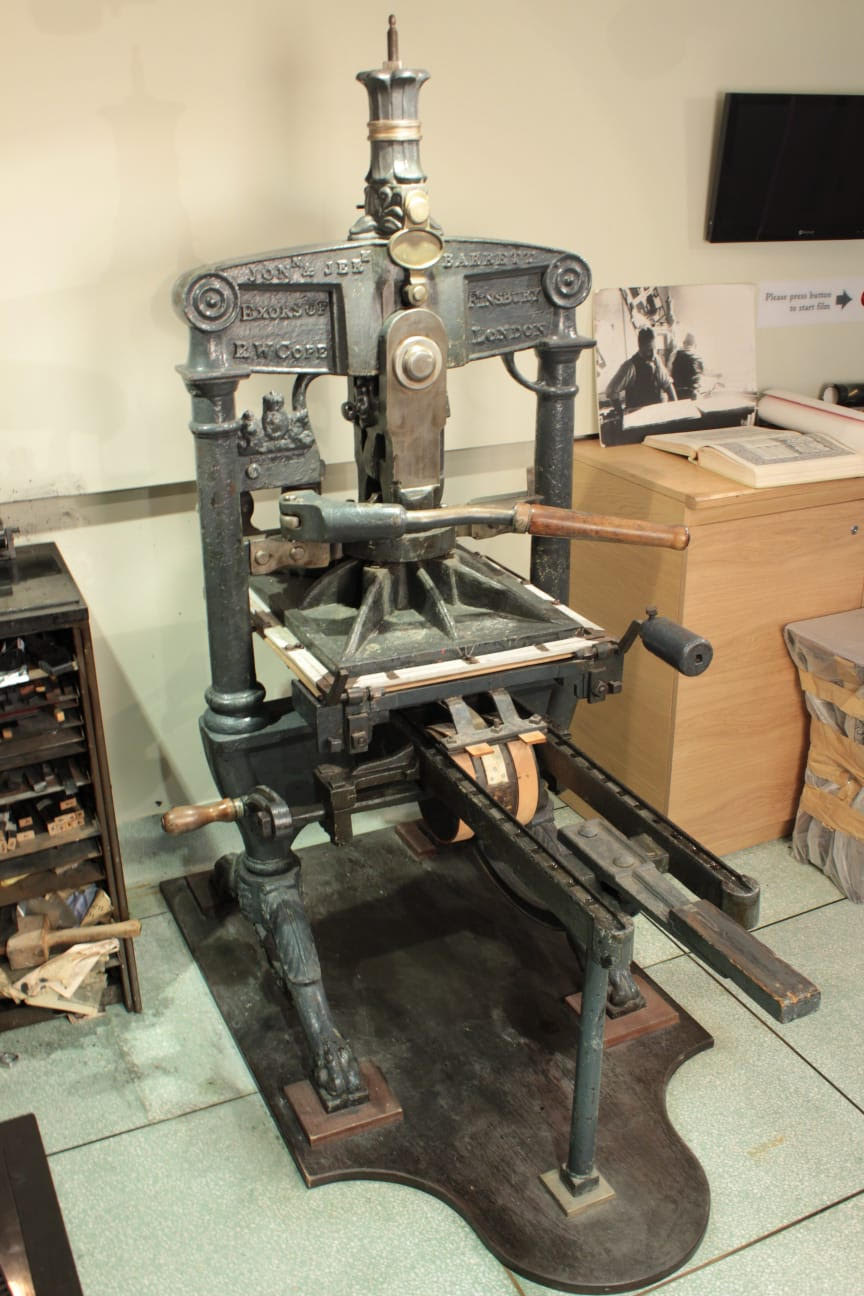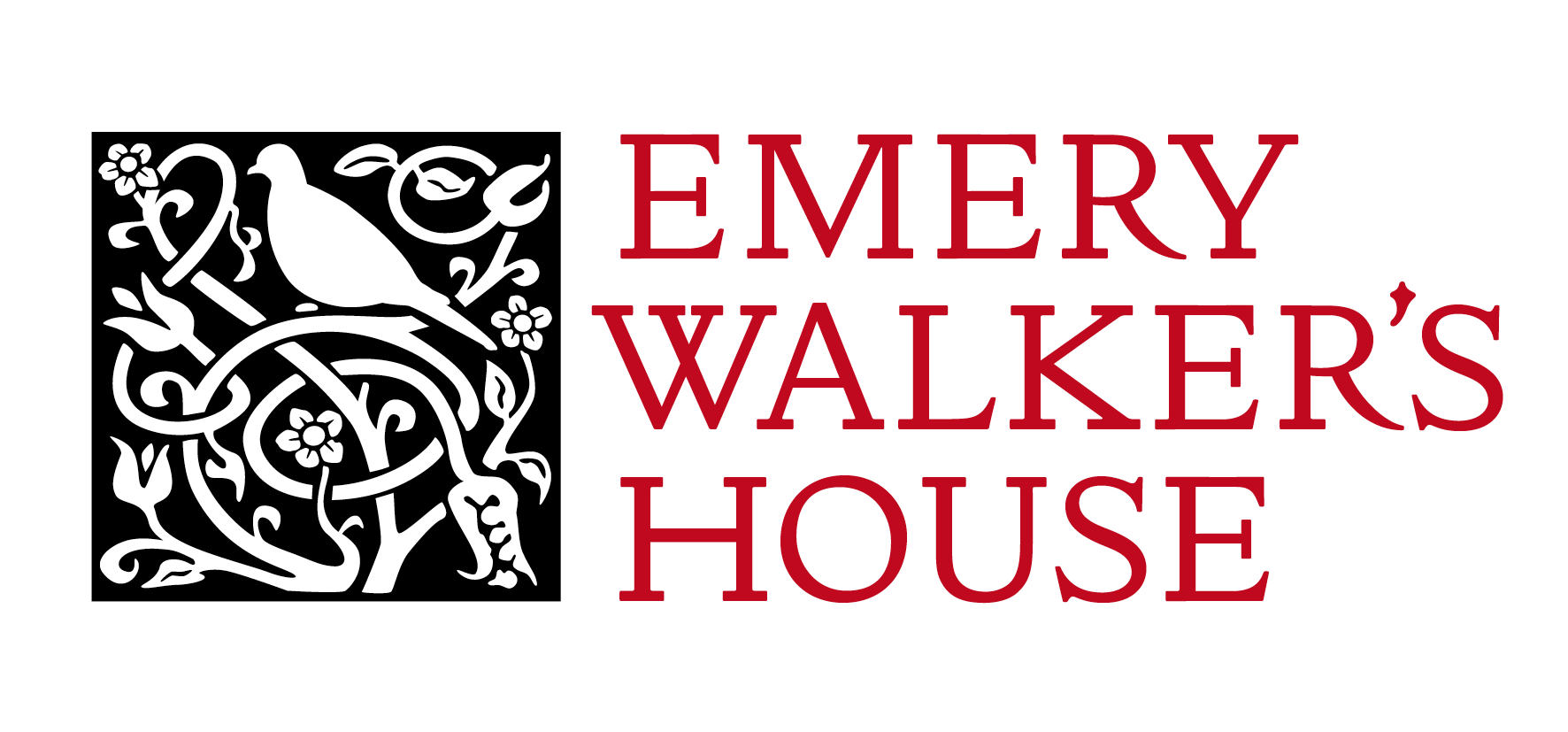Albion printing press used at the Kelmscott Press, 1835
The 1835 Albion press was purchased by Morris in late 1890, the first of three Albions used by the Kelmscott Press and probably used for all the subsequent Kelmscott Press books including the Chaucer of 1896. Although interested in book design for many years it was not until the 1880s that Morris, inspired by his friend Emery Walker, took steps to improve the printed book. He designed three typefaces: Golden, a Roman face in 1890; Troy, a Gothic face in 1891; and Chaucer, a reduction of Troy in 1892. After Morris’s death the Albion press was acquired by C.R. Ashbee for the Essex House Press on the demise of which, in 1906, Ananda Coomaraswamy purchased it for use at Broad Compton. By 1912 it was in use at A.H. Bullen’s Shakespeare Head Press in Stratford upon Avon where it passed into the hands of Sir Basil Blackwell. In 1929 Blackwell moved the Albion press to Oxford where it remained in use until 1942-43. In the 1970s when Kelmscott House was given to the William Morris Society by Helena Stephenson, Blackwell donated the Albion press to Kelmscott House. The first book to be issued by the Press was the 'Story of the Glittering Plain', written by Morris in May 1891. It was the practice of the Press to print a small number of volumes on vellum. The last, which Morris supervised, was the Chaucer, published in 1896 at £20 for one of the 425 copies on paper. “… To enjoy good houses and good books in self respect and decent comfort, seems to me to be the pleasurable end towards which all societies of human beings ought now to struggle.” (William Morris) The book that this quotation appears in was printed and published by the William Morris Society in 1993; three hundred were published. Morris had long been fascinated by the skill of the Medieval craftsmen who produced beautiful illuminated books and especially attracted by their typographical excellence which he felt superior to that produced in Victorian times: “It was the essence of my understanding to produce books which it would be a pleasure to look upon as pieces of printing and arrangement of type”. Printing was disliked and he strove to produce books that resembled illuminated manuscripts. Morris was consciously challenging contemporary practice: the opposite pages must be visually balanced, illustration and ornament must be carefully considered in relation to the text. As a printer, as in the other art forms, he was the pioneer of functionalism and in the 19th century it was a revolutionary point of view which has become the basis of all modern design. Sydney Cockerell explained how the designs for initials and borders were made: “[Morris]... had two little saucers in front of him. He roughed out his design in pencil – then draw it again carefully with his black brush…using white over the black for various little details. Morris’s designs were then redrawn by Robert Catterson-Smith (later the Head of the Birmingham School of Art) and transferred photographically to the woodblock. William Hooper executed the final engraving.






